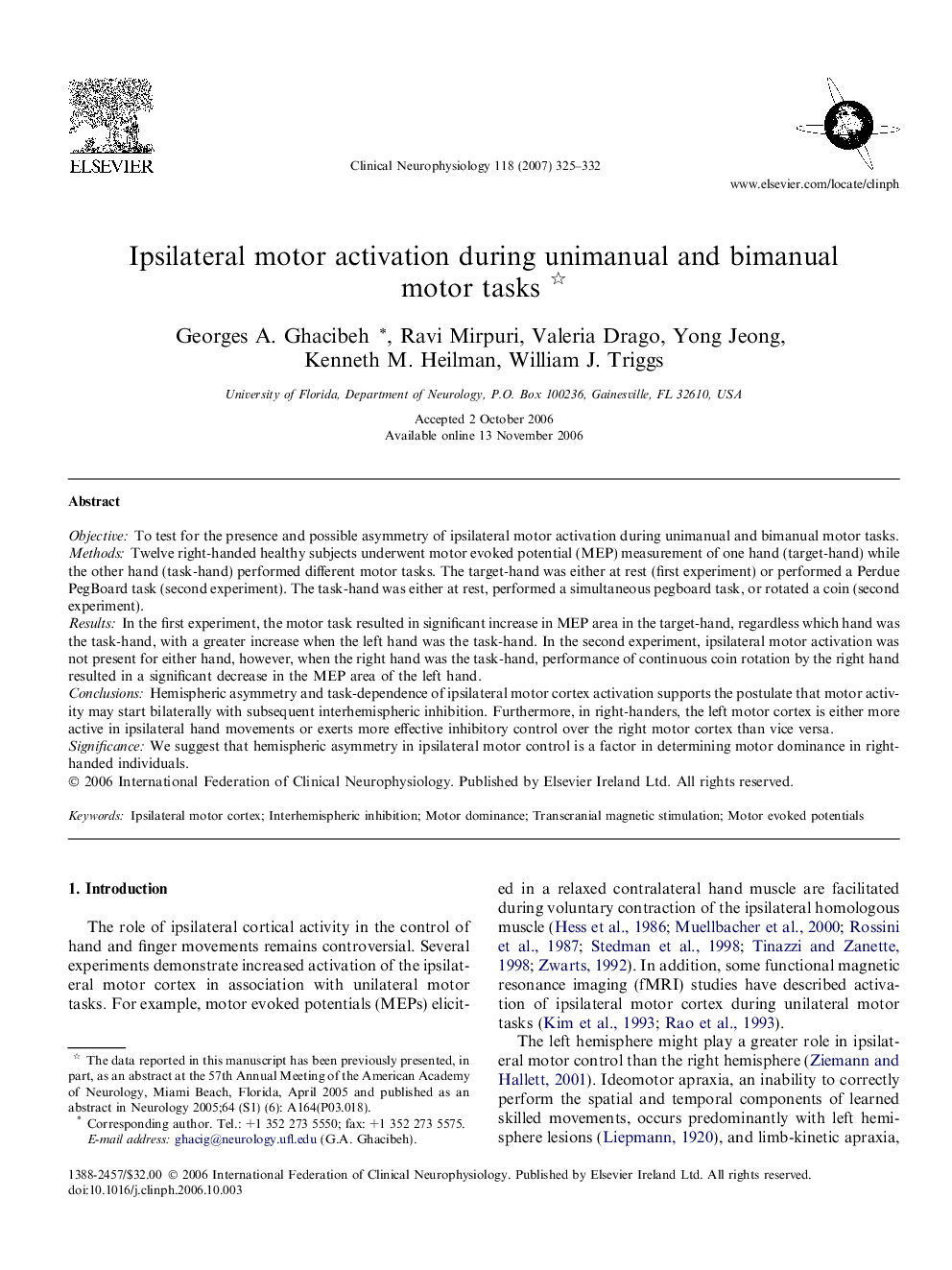| Article ID | Journal | Published Year | Pages | File Type |
|---|---|---|---|---|
| 3048014 | Clinical Neurophysiology | 2007 | 8 Pages |
ObjectiveTo test for the presence and possible asymmetry of ipsilateral motor activation during unimanual and bimanual motor tasks.MethodsTwelve right-handed healthy subjects underwent motor evoked potential (MEP) measurement of one hand (target-hand) while the other hand (task-hand) performed different motor tasks. The target-hand was either at rest (first experiment) or performed a Perdue PegBoard task (second experiment). The task-hand was either at rest, performed a simultaneous pegboard task, or rotated a coin (second experiment).ResultsIn the first experiment, the motor task resulted in significant increase in MEP area in the target-hand, regardless which hand was the task-hand, with a greater increase when the left hand was the task-hand. In the second experiment, ipsilateral motor activation was not present for either hand, however, when the right hand was the task-hand, performance of continuous coin rotation by the right hand resulted in a significant decrease in the MEP area of the left hand.ConclusionsHemispheric asymmetry and task-dependence of ipsilateral motor cortex activation supports the postulate that motor activity may start bilaterally with subsequent interhemispheric inhibition. Furthermore, in right-handers, the left motor cortex is either more active in ipsilateral hand movements or exerts more effective inhibitory control over the right motor cortex than vice versa.SignificanceWe suggest that hemispheric asymmetry in ipsilateral motor control is a factor in determining motor dominance in right-handed individuals.
